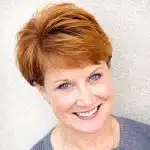Hillbilly Heroin | OxyContin Abuse & The Opioid Epidemic

Hillbilly heroin is an informal name for OxyContin, a brand-name prescription painkiller containing the opioid analgesic oxycodone.
Tragically, changes in how opioid painkillers were prescribed in the late 1990s and early 2000s lead to a massive increase in prescription opioid use in the United States; doctors and policymakers drastically underestimated the drug’s potential for misuse and addiction.
The ongoing health crisis that resulted has become known as the American Opioid Epidemic.
What Are Opioids?
Opioids are a family of chemically related drugs similar to opium, which is made from the opium poppy plant.
Opioids, also called opiates, include natural, synthetic, and semi-synthetic legal and illegal drugs. They are extremely important in medical care for pain management, but are widely abused due to their euphoric effects at higher doses.
Opioid drugs include:
- prescription painkillers like oxycodone, hydrocodone, codeine, and morphine
- heroin
- increasingly potent synthetic opioids like fentanyl, tramadol, carfentanil, isotonitazene, and others
Origins Of The Opioid Epidemic
In 1995, a pharmaceutical company located in Stamford, Connecticut called Purdue Pharma launched OxyContin, a prescription medication that used oxycodone in a long-lasting, controlled-release pill.
At the same time, American doctors and policy leaders were putting an increased focus on treating and controlling chronic pain, which impacted up to one third of Americans.
In 1998, the Federation of State Medical Boards released a policy assuring that doctors would not face regulatory action for prescribing opioid painkillers for medical treatment, even in high quantities. In 2006, this same organization recommended sanctions for doctors who under-treated pain in their patients.
The benefits of providing effective pain-relief to improve quality of life, it was thought, would outweigh any potential abuse.
The First Wave
OxyContin prescriptions increased dramatically in the early 2000s, especially in economically depressed, rural regions like the Appalachian Mountains.
As prescriptions soared, increasing amounts of OxyContin found its way into the black market, collected through doctor shopping, over prescribing, and even robbery.
By scraping off the outer layer of the drug it was possible to experience the full dose of the medication at once, along with heroin-like euphoria. As a result, prescription opioid deaths rose from 1999 through 2011 and have remained high in the years since.
The Second Wave
In the late 2000s, OxyContin’s addictive properties and its effect on American communities were well known. State and federal agencies began suing and fining Perdue Pharma for misrepresenting the drug’s properties and improperly marketing it to doctors and policymakers.
By 2009, the United States consumed 99% of the world’s hydrocodone (Vicodin), and 81% of the world’s oxycodone.
By 2011, painkiller prescriptions in the United States tripled compared to figures from 1991, growing from 76 million prescriptions per year to over 219 million per year.
Around this time, in 2010, overdose deaths involving the illicit drug heroin began to rise steeply in turn, increasing sevenfold by 2016.
This increase marked a new chapter in the opioid epidemic; large numbers of individuals with a prescription drug problem began to turn to heroin for its availability and low cost.
The Third Wave
Overdose deaths from new synthetic opioids began an alarming increase in 2013, jumping tenfold in five years. Death went from around one per 100,000 individuals to around 10 in 2018.
The main culprits were fentanyl, tramadol, and new illicit synthetic opioids.
These low-cost drugs are incredibly potent, drastically increasing the danger of an overdose. Fentanyl, for instance, is estimated to be between 50 and 100 times more potent than heroin or oxycodone.
Treating Opioid Use Disorder
The Opioid Epidemic and reckless use of opioid painkillers has written a tragic chapter of American history.
If you or a loved one struggles with drug use, treatment services for opioid use disorder include medication-assisted treatment, cognitive behavioral therapy, peer support, and more.
To learn more about our treatment programs, please contact Ark Behavioral Health today.
Written by Ark Behavioral Health Editorial Team
©2024 Ark National Holdings, LLC. | All Rights Reserved.
This page does not provide medical advice.
American Academy of Pediatrics (AAP) - Timeline of the Opioid Epidemic in America
Centers for Disease Control (CDC) - Understanding the Epidemic
National Institute on Drug Abuse (NIDA) - Prescription Opioids DrugFacts
The Guardian - Hillbilly heroin: the painkiller abuse wrecking lives in West Virginia
U.S. Department of Health and Human Services - What Are Opioids?

Questions About Treatment?
Ark Behavioral Health offers 100% confidential substance abuse assessment and treatment placement tailored to your individual needs. Achieve long-term recovery.
100% confidential. We respect your privacy.
Prefer Texting?
Our friendly support team is here to chat 24/7. Opt out any time.







 Learn More
Learn More








